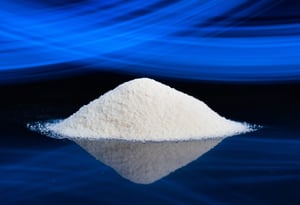The U.S. Environmental Protection Agency is proposing a ban on most uses of methylene chloride, a dangerous chemical that is known to cause serious health risks and even death.
The proposed ban on methylene chloride, also known as dichloromethane, includes all consumer and most industrial and commercial uses. The chemical compound is colorless and volatile and exhibits a sweet aroma. Because it is a versatile solvent, it’s used in a wide range of industrial and commercial applications.
If methylene chloride is an ingredient in any of the chemicals or substances that you use as part of your business operations, it’s important to begin considering how you will dispose of these substances once the proposed ban is finalized.
How Methylene Chloride Is Used In Industry
Methylene chloride is commonly used in industry as a solvent, paint stripper and cleaning agent. It is a versatile chemical that is useful in many different applications, such as:
chemical that is useful in many different applications, such as:
- Paint stripping: Methylene chloride can dissolve many types of paints and varnishes, making it useful for removing coatings from surfaces.
- Chemical processing: Methylene chloride is used as a solvent in many chemical processes and is particularly useful for extracting oils, fats and waxes from natural products like plants and animal tissues.
- Pharmaceuticals: Methylene chloride is used as a solvent in the manufacturing of some pharmaceuticals. It can be used to extract active ingredients from natural products, and it can also be used to dissolve drugs for injection.
- Foam blowing: Methylene chloride is used as a blowing agent in the production of polyurethane foams. This chemical compound helps to create the foam’s cellular structure by expanding and solidifying the polyurethane.
- Degreasing: Used as a degreasing agent in the production of metal parts, methylene chloride can dissolve oils and greases, leaving the metal clean and ready for further processing.
Despite its widespread use, methylene chloride can be harmful if not handled properly. It can cause irritation to the skin and eyes, and prolonged exposure can lead to more serious health problems. These dangers have led to the proposed ban by the EPA.
Why The EPA Is Proposing A Ban On Methylene Chloride
Methylene chloride is the second chemical to undergo risk management under the reformed process created by the 2016 Frank R. Lautenberg Chemical Safety for the 21st Century Act, according to the EPA. The first to undergo risk management was asbestos.
The use of methylene chloride carries the risk of severe health impacts and even death due to acute poisoning, according to the EPA. Since 1980, at least 85 people have died from acute exposure to the chemical compound, largely workers who were performing renovation contract work. Even when using personal protective equipment (PPE), many developed long-lasting health impacts, including cancer.
In the consumer sector, methylene chloride is used in a number of household items like aerosol degreasers and brush cleaners. In commercial applications, the chemical is used in adhesives and sealants. In the industrial sector, it’s commonly used for making other chemicals. For example, a common use of methylene chloride is as a chemical intermediate during the production of hydrofluorocarbon (HFC) 32. This is used in refrigerant blends.
What does the proposed risk management look like? The new rule would phase down manufacturing, processing and distribution of methylene chloride for all consumer uses. It would also rapidly phase down most industrial and commercial uses within the next 15 months.
For the industrial manufacturing and industrial processing sectors, as well as for any federal uses that the EPA is not proposing to prohibit, the EPA is proposing mandating that employers implement a workplace chemical protection program that would include strict exposure limits. The goal is to better protect workers from methylene chloride exposure.
What The Proposed Ban Could Mean For Your Business
Environmental regulations are constantly evolving. If your business manufactures products that contain methylene chloride, you may need to begin making preparations on how you will phase out its use and how you will dispose of leftover chemicals.
Methylene chloride is considered a hazardous waste and must be disposed of according to state and federal regulations. These regulations include proper transportation and disposal at the appropriate TSDF, or treatment, storage and disposal facility.
Proper transportation is crucial when dealing with hazardous waste because hazardous materials can pose a significant threat to human health and the environment if they are not handled, stored and transported safely.
Hazardous waste often contains chemicals or other materials that can be toxic, flammable, reactive or corrosive. If these materials are not properly contained during transportation, they can potentially leak or spill, which could result in environmental contamination, fires, explosions or other dangerous situations.
Methylene chloride is both toxic and flammable. Although it is not typically considered reactive or corrosive, it can react with some chemicals under certain conditions.
Proper transportation of hazardous waste requires specialized equipment, trained personnel and strict adherence to regulatory requirements. This includes proper labeling and packaging, appropriate handling procedures and compliance with transportation laws and regulations.
If your facility has substances that contain methylene chloride on-hand, it’s important to begin working with a licensed and experienced hazardous waste disposal company now so that you can determine how these new guidelines may impact your business.
How A Disposal Company Can Help
In addition to transporting your hazardous waste to the correct treatment facility, a reputable company will provide additional services as well to ensure your business is compliant in all areas.
For example, it’s important to work with hazardous waste disposal companies that can identify uncertain waste streams through profiling and testing to ensure the right facilities receive the right hazardous materials. The best disposal companies will also evaluate your waste streams to determine if the waste could be classified as non-hazardous waste, which will save you money in disposal fees.
Even if the proposed methylene chloride ban doesn’t require that your company or agency stop using the chemical compound, the new workplace chemical safety program may impact your operations.
According to the EPA, employers will have one year after the finalization of the risk management rule to comply with the worker chemical protection plan. Employers will be required to periodically monitor their workplace to ensure that workers are not being exposed to levels of methylene chloride that would lead to an unreasonable risk.
An experienced waste management company will help you establish or modify your current waste management plan to ensure you are meeting the requirements of this proposed new law. A disposal partner should also help you develop site-specific plans that include training and emergency preparation.
A clear sign that a disposal company is experienced in this area will be if the disposal company offers a hazardous waste walk-through program. This type of consultative services evaluates your waste procedures and catches potential issues before they become costly mistakes.
As hazardous waste regulations continue to evolve, it’s critical for companies that generate toxic waste to be prepared for any future changes in the pipeline so that your day to day operations can remain business as usual.


Comment